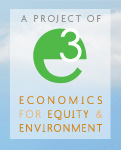Several years ago, I teamed up with Ulf Sonesson, food system researcher, and Peter Tyedmers, a fellow ecological economist, to understand how to develop sustainable food systems to feed a planet of nine billion by 2050. As the focus of our study, we chose salmon, an important source of protein around the world and a food that is available nearly anywhere at any time, regardless of season or local supply. We examined the salmon’s life cycle: how the fish are caught in the wild, what they’re fed when farmed, how they’re processed and transported and how they’re consumed.
And what did we find in our research? When it comes to salmon, the questions of organic versus conventional and wild versus farmed matter less than whether the fish is frozen or fresh. In many cases, fresh salmon has about twice the environmental impact as frozen salmon.
The reason: Most salmon consumers live far from where the fish was caught or farmed, and the majority of salmon fillets they buy are fresh and shipped by air, which is the world’s most carbon-intensive form of travel. Flying fillets from Alaska, British Columbia, Norway, Scotland or Chile so that 24 hours later they can be served “fresh” in New York adds an enormous climate burden, one that swamps the potential benefits of organic farming or sustainable fishing.
Fresh fish is wonderful and healthful, and if it’s driven a reasonable distance to market, then its relative environmental impact is low. Fortunately for conscientious diners, when fish is flash-frozen at sea, its taste and quality is practically indistinguishable from fresh. More important, it can be moved thousands of miles by container ship, rail or even truck at much lower environmental impact than when air freighted. If seafood-loving Japanese consumers, who get most of their fish via air shipments, were to switch to 75 percent frozen salmon, it would have a greater ecological benefit than all of Europe and North America eating only locally farmed or caught salmon.
Is the future full of fish sticks? No. But when it comes to eating seafood from halfway around the world, we need to get over our fetish for fresh. With the challenges facing the world’s oceans and climate mounting, buying frozen is a powerful choice that concerned eaters everywhere can make.

